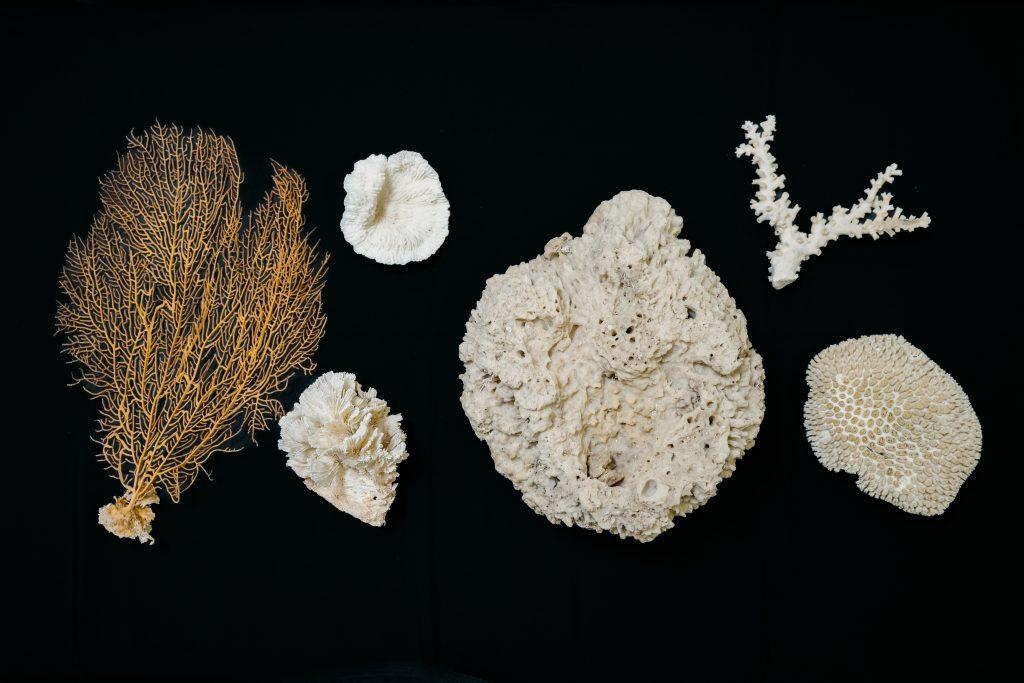Research //

Cnidaria is an animal phylum comprising aquatic animals with one or both of two body forms, the swimming medusa and non-swimming polyp. They are radially symmetrical with a simple body plan comprising a mouth surrounded by tentacles that contain stinging cells. Cnidarians can be found in both freshwater and marine ecosystems, comprising various hard and soft corals, sea anemones, hydroids, and jellyfishes.
The LKCNHM’s collection of Cnidaria comprises more than 7000 soft-bodied and skeletal specimens in over 3000 catalogued lots. The taxon with the greatest representation in the Cnidaria collection is Actiniaria, or sea anemones, with over 3000 specimens, many collected during and following the Comprehensive Marine Biodiversity Survey between 2010 and 2015. This sea anemone collection is contributed significantly by the late Professor Daphne Fautin and colleagues, and continues to grow steadily owing to the work of local marine taxonomists.
Another large part of the collection would be the Scleractinia, or stony corals, comprising about 3000 specimens. It is largely built by contributions from NUS’s Reef Ecology Study Team, with a majority of specimens collected since the 1980s during Professor Chou Loke Ming‘s extensive Singapore reef survey programme that began with the ‘ASEAN-Australia Living Coastal Resources Project’. Specimens were also contributed by the former Bioscience Centre (presently The Protein and Proteomics Centre). The collection is still growing steadily, with a recent gift by Professor Chuang Shou-Hwa who studied marine fauna along the Malayan shores since the 1960s. Overall, the museum’s coral collection forms the foundation of a comprehensive inventory of Singapore’s stony corals and their conservation status assessed under the Red Data Book, as well as ongoing phylogenetic analyses based on morphological, genetic and genomic data.
Also of note is the jellyfish collection, which comprises about 500 specimens of Hydrozoa and well over 1000 specimens of Scyphozoa (true jellyfish) and Cubozoa (box jellyfish). These specimens are critical material for local faunal studies and genomic analyses.